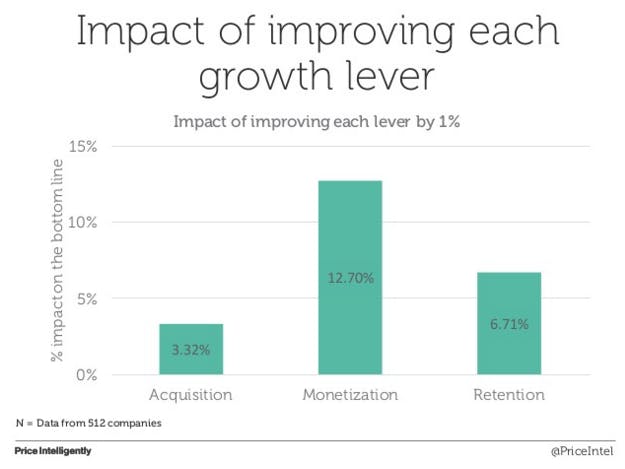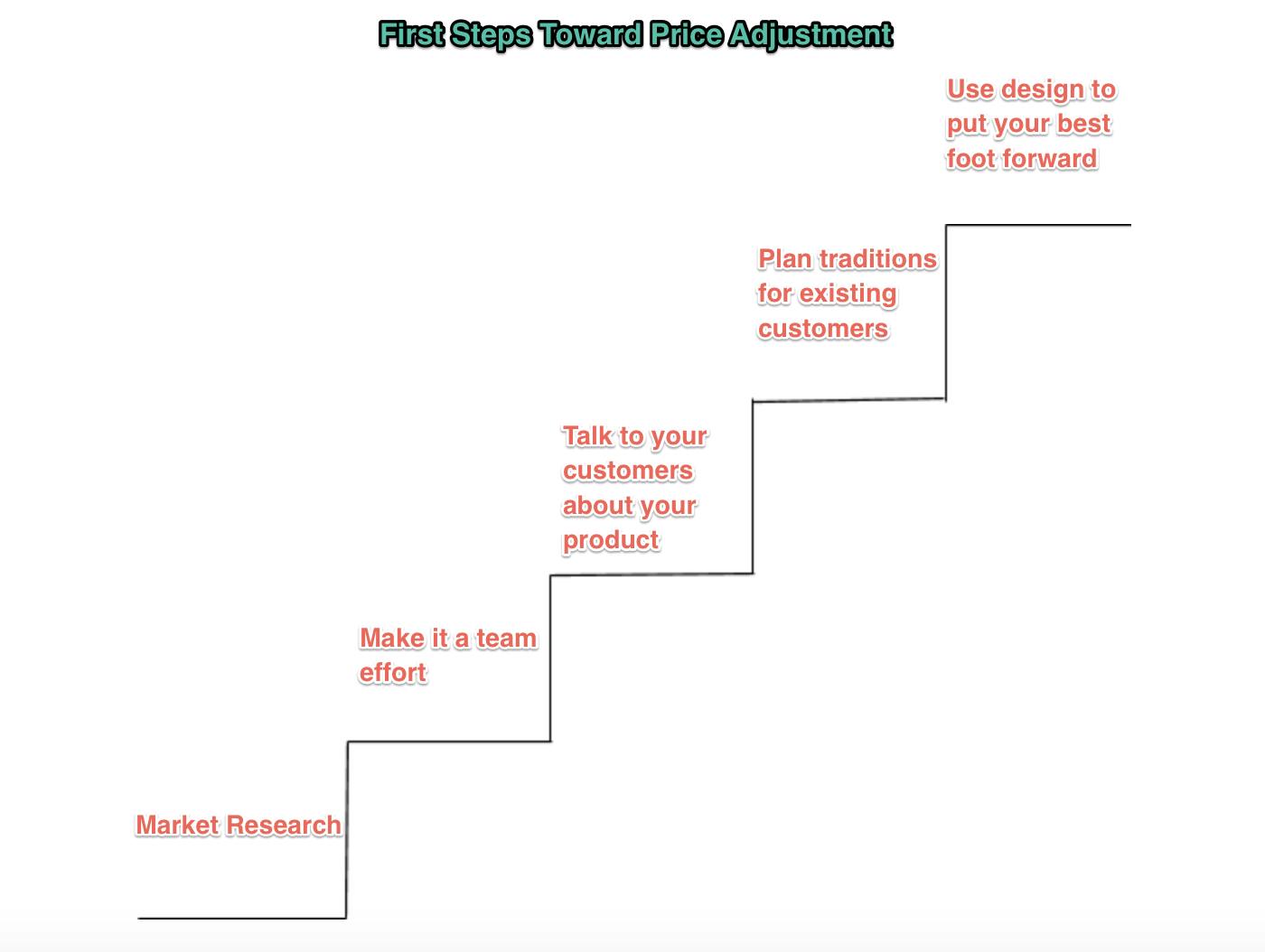Neglecting your pricing strategy is costing your company and slowing your growth. Stop waiting and take these first steps to start adjusting your prices today.
Can you remember the last time you thought about changing your pricing plans? Maybe you don't want to change it because you feel a sense of analysis paralysis. Maybe you just don't know where to begin.
Stop staring at your watch and waiting for the golden hour. You don't need to wait to fully establish a pricing team, hire a “master pricer,” or get a kick in the pants from your investors. When it comes to thinking about your pricing, there's no time like now.
To leverage yourpricing strategyeffectivelyyou have to be dynamic. Below, we'll go through answers to the big pricing questions of Why, When, and What so you can start making the most impact right away.
WHY is a pricing adjustment important?
Pricing is the cornerstone of your monetization strategy. Changes in pricing can enhance every aspect of your business, and as aspects of your business change, so should your pricing.
According to Jeanne Hopkins at Continuum, pricing is the most overlooked component of business strategy. The average company spends only 6 hours in the entire lifetime of the business planning their pricing. But as we've pointed out, monetization has a greater impact than both acquisition and retention on your company's bottom line.

A 1% change in your pricing plan can increase your bottom line by up to 12.70%. But 1% changes in retention and acquisition only improve your bottom line by 6.71% and 3.32%, respectively. If you're trying to grow but you're not constantly improving your monetization plan, you're pouring time, money, and effort into less effective channels.
Even a 1% change in monetization will force you to think about why you're making an adjustment and how your price can better align with your product. This encourages you to create value-based pricing, which relates price with the scalable core value your customer receives from your product.
For instance, the video hosting service Wistia constantly changes their pricing plan. These changes have been an essential part of their company's development. CEO Chris Savage said that the only way to collect data on their prices was to charge something and experiment—and then learn fast from what they discovered.
Over time Wistia has adjusted their value-based pricing according to how their customers use their product. This benefits Wistia's customers because it ensures that they are paying a price that matches exactly what they want from your product. Meanwhile, Wistia is able to help their bottom line by optimizing their monetization (in not under-charging), and enhance the integrity of their customer relationships (in not over-charging).
Other methods of pricing like cost-plus pricing and competitor-based pricing don't relate directly to your customers' experience with your product. There's a good chance you'll end up over-charging or under-charging for your product. Adjusting your pricing according to a value metric will help you understand your customers and your product's value.
Key Takeaway: Remember that your pricing strategy needs constant maintenance to keep your business growing. Evaluate how much time you've spent on your pricing strategy and identify the most recent update. A new pricing scheme could align with changes that have occurred since then.
WHEN should my company start thinking about a pricing adjustment?
The sweet spot for making outward changes to your pricing plan is around every 6-9 months. It often works well to coincide price adjustments with product adjustments, but this isn't a steadfast rule. Your timeline for making changes depends on the growth stage of your company.
- Newer companies: Make some sort of adjustment every 6 months.
In addition, new companies should be conducting reviews every quarter. It's important to understand how your current strategy is working even if you're not planning on making outward changes at that time.
- More mature companies: Review every quarter, and make adjustments every 6-12 months.
Contrary to common practice, a larger company size and more experience do not necessarily mean less frequent price adjustments. As companies scale and begin to sell to enterprise-level customers they need to constantly make adjustments to their pricing plans.
The frequency of changes will vary because companies with enterprise-level customers might need to make adjustments every time they take on new customers of this size. This is because enterprise-level plans often involve custom packaging and pricing on a customer-by-customer basis.
When a new enterprise-level customer requests a consultation, your company needs to evaluate exactly how to scale your pricing to a particular value metric for that customer.
But you can't just sit down once or twice a year, pull your hair and grind your teeth for a few hours, and emerge from your meeting room with a perfect new pricing plan. Though outward changes to your pricing are done in intervals, the internal work is daily and dynamic.
Your continuous process will include research, conversations, and brainstorming sessions. It should be centered around learning about the market, learning about your customers, and understanding how pricing affects other aspects of your company. There are concrete steps that you can take immediately to kick off your pricing process today.
Key Takeaway: If it's been over a year since you made changes to your pricing strategy, it's outdated - you're missing out on a wealth of monetization opportunity.
WHAT are the first steps I should take?
Don't wait for your lagging indicators to tell you it's time to adjust. You need to be proactive about pricing in order to make sure you're not—as we like to say—leaving any money on the table.

- Do market research: You'll make more confident and more informed decisions if they're backed up by research. In a talk at SaaSFest, Senior Vice President and CMO of Continuum Jeanne Hopkins explains how important it is to understand your customers through data instead of relying on guesses. This means looking at your own past data on how your prices have changed, why they've changed, and how your customers have reacted. You can also conduct a feature value analysis to hear what customers themselves believe is most important.
- Make it a team effort: You need to align ideas around price strategy across various departments so you're all putting your efforts towards the same goals. Discuss pricing early and often with team members in all departments—especially sales, marketing, customer success, and product development. Conversations about pricing help all team members understand their unique roles in pricing.
- Talk to your customers about your product: It's vital to communicate with customers about pricing because no one is going to want to pay more. Establishing a precedent of communication will help you easily and effectively explain any price increases while maintaining good relationships.
- Plan transitions for existing customers: Your relationships with your current customers are extremely valuable and you want to show them that you care. This is why it's important to plan and communicate how a price adjustment will affect your existing customers. You may decide to grandfather existing customers into a new plan, provide a grandfather discount, or simply implement a direct-but-justified price increase. Throughout the process consider talking to price-sensitive customers individually and remember that honestly fosters trust.
- Use design to put your best foot forward: Your pricing page is a potential customer's ultimate destination. It can be a huge point of friction in your funnel if it doesn't clearly and descriptively present your pricing options. The page should be easy to understand and should help customers to pick a plan. Updating and improving the design of your pricing page for ease of customer understanding should always be a top priority.
Your first steps should be a combination of planning and simple actions that will set precedents and lay solid foundations.
Key Takeaway: Getting started with these five steps will not only ease stress when it comes time to make big pricing decisions, it will allow you to make informed and smarter decisions.
Don't wait until you feel ready
It's easy to adopt a lazy policy about pricing - you assume that if you set it once you're good to go. It's easy to punt a pricing project to next quarter or next year. But if your company and product evolve without corresponding upkeep of your monetization plan, your prices are no longer relevant or meaningful.
You can turn this around today. Share the importance of monetization with your team and start working together to brainstorm thoughts that will become actions. Invest in the future success of your company and in your future ease of mind by starting to set up the right structures today.


